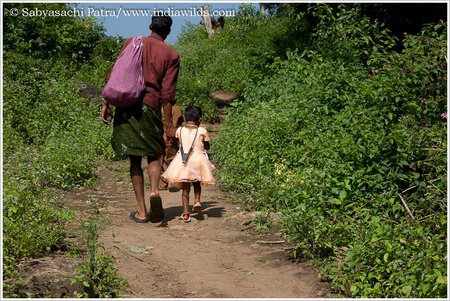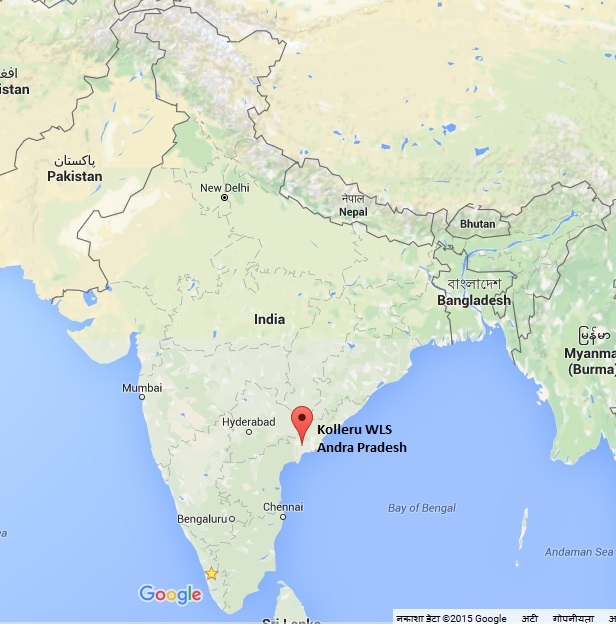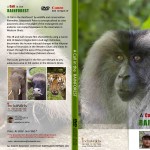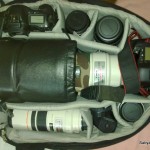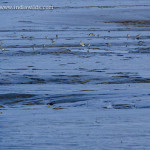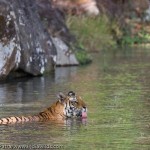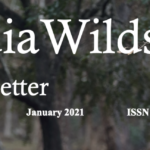IndiaWilds Newsletter Vol. 7 Issue IX
Amend Arms Act for Air Guns
The Home Ministry of India is trying to amend the Arms Act 1959 and Arms Rules 1962 to increase the FDI (Foreign Direct Investment) component from 26% to 49% so that more foreign arms manufacturers can come and set up shop in India. To increase the attractiveness for the arms manufacturer the Home Ministry also wants to grant the arms licenses to people easily.
As such there is no dearth of weapons in India for people who are criminally inclined. In one incident when a shoot of a prominent Bollywood movie was about to be called off for a day due to unavailability of a toy weapon, the people watching the shoot in Bihar immediately offered around 40 weapons of different makes for the movie crew. Sanjay Dutt, a top Hindi film star is convicted and in jail for possessing an AK47. Other Hindi film heroes Salman Khan and Saif Ali Khan are on trial for poaching. USA, where gun laws are lax, continues to be in news for mass shooting in public places. Though this is an important topic, conservationists and wildlife activists can easily dismiss this as unimportant. Perhaps this may not immediately raise the alarm bells in conservation circles because they are burdened with way too many battles to fight, however, it hasn’t gone unnoticed by the Minister for Women and Child Development Smt. Maneka Gandhi.
She has rightly pointed out that since the Arms Act and Arms Rules are being amended, it is time to bring the Air Gun under the licensed category as till date Air Guns are still under the exempt category and one can buy an airgun without a license. She said “When you buy these guns from a toy shop and give it to your children, who will they practice on? On other children or animals. The plastic pellets of air guns have lead. They can injure a child and in case of an animal, cause gangrene.”
Unfortunately, airguns are openly advertised as weapons of self-protection and many parents buy it for their children or for themselves. Many adults are known to kill birds like Green Pigeons and peacocks for their pot. I have personally seen in my childhood days that adults kill birds as well as seen even a monkey being killed by a shot in the ear.
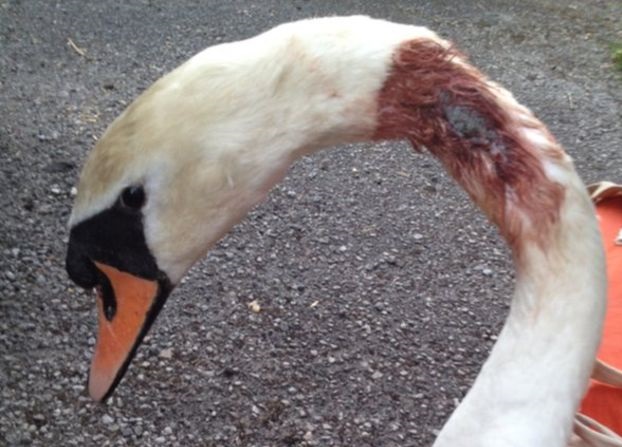
Swan shot with an air gun (Image courtesy: Yorkshire Swan Rescue)
Billy Arjan Singh, who had often waged a lone battle to save India’s wilds, has written in his book “The Legend of the Maneater” that during his childhood days he used to pepper various animals with his airgun pellets and among others a leopard died due to the amount of firing from his air gun. Billy writes “My earliest recollection of childhood companions is of a boy called Minu Ismail… Minu and I launched into a disgusting career as killers at around the same time. His mother bought him an air gun firing lead shot with a pump action, whereas I acquired a single-shot Daisy air gun, which I later changed for a Diana which fired a mysterious projectile called .177 bore pellets…Thus armed, we started our respective careers as bloodthirsty and murderous urchins with an innate desire to slaughter anything in sight. I used to search the walls for geckos to be slaughtered. I would go over to where Minu lived. After he collected his ration of eight round shots from Mrs Ismail we would make tracks for the Balrampur Zoo, known as Anandbagh…. The lion and tigers were immune to our intentions, maybe because they were in large cages, or perhaps because we realised that an assault on these powerful animals would not be tolerated, or maybe their personalities were too strong for our sneaky little minds; but one particular leopard in a small cage was a selected victim. He would start snarling the moment he heard us, and the skin of his tail was raw with the frenzy and hate with which he lashed it on the cement floor. However, he was soon dead with the amount of lead we pumped into him, a monument to the activities of a couple of idiotic boys”.
The activities of idiotic boys are not just limited to the British era. In an incident in April 2010 in Jorhat, kids killed 250 egrets using their catapults. The sheer number of birds killed in that incident had caused shock. However, people routines kill endangered birds using catapults, airguns, noose and any other means that they can readily use.
One of the poachers who had wiped out tigers from Sariska had confessed that their favourite means of killing tigers was placing a noose and when a tiger gets caught, they move in closer with a 12 bore gun and fire from point blank range. With increased patrolling (atleast in paper), a gun shot is supposed to be heard from a distance and can be investigated. On the contrary, one can always place noose and then move in and fire lead pellets from the Air Gun to kill the trapped animal till it dies.
In these days of heightened security concerns, even a kid’s toy gun can cause the security to detain people. So why not ban Air Gun which can legitimately kill if it hits some of our sensitive areas? On 19th of September, a man was reported to have come to Rahul Gandhi’s rally at Champaran, Bihar. That man seems to have said that he carried the Air Gun for his own security. Clearly if an Air Gun can secure someone, then it can also harm others. This logic is not unknown to the poachers.
In 2010 august, a well-knit racket of herbivore poaching came to light in BR Hills Wildlife Sanctuary in Karnataka. This organised poaching racket used .22 rifles as it makes less noise and were poaching for five years before they were apprehended. They used to use the safari timings to move in the main road and then fire on animals and quickly hide their carcass. Later they used to come and collect it. The then PCCF, Mr B K Singh, had said “On interrogation, we learnt that the kingpin Salman, studying MBA in London is a frequent visitor. This is just a group, which claims to have killed 40 ungulates- 25 in Bandipur, ten in Nagarhole and five in BRT WLS”.
In most of the places the cost of one kilogram of mutton is between 400-500 rupees a small 30kg cheetal will give them close to 15000 rupees. Heavier Sambar’s will give much more. This is more than one can get from the farm and hence becomes lucrative. Without sufficient prey predators cannot survive.
During my travels to little known places, as well as in some of the wildlife sanctuaries and National Parks, I see makeshift hides over waterholes. Given that Air Guns and other smaller arms are not going to ring loud, poaching won’t be known. Given that many forest department posts remain vacant and the average age of the existing staff often being in the late 50s, patrolling to protect India’s wild heritage is low. In such a situation, laws and their implementation need to be tightened. So it is very important that we need to plug the loopholes in the Arms Act 1959 and the Arms Rules 1962. However, the Home Ministry is moving in the other direction. Wildlife lovers can raise their voice by writing to Shri Rajnath Singh, Hon’ble Home Minister of India.
Chimpanzee hits drone with stick
In India when a flight lands, people have a habit of getting up from their seats and standing in the aisle. Quickly it gets cramped with people in close body contact with each other. Some people start pulling out their backpack and forcefully pushing it onto their shoulders so that there is a physical barrier between them and their fellow passengers. Some other gentlemen try to elbow each other on the pretext of pulling out their phone or adjusting their hair, spectacles etc. People need a minimum personal space for themselves.
This concept is also valid for the non-human species as well. Some animals flee when you move in close. Others snarl, raise their fangs, mock charge to protect their space. In an interesting incident, Chimpanzees who are known to have close to 99% of our DNA, have behaved like people do.
On 10th of April, 2015 in Netherlands a a TV shoot had employed a quadcopter for aerial filming of chimpanzees in the Royal Burgers’ Zoo. The Chimpanzees immediately took notice of the flying remote quadcopter and one of them quickly took a stick and hid it below her body on the branch. The moment the quadcopter moved in close, the chimpanzee pulled out the stick and hit the quadcopter with a quick blow. The chimpanzees them moved in and dismembered the fallen drone. The attached Go Pro camera was still recording their antics which can be seen in the following link:
This incident proves their intelligence. It also shows that we can’t pay scant regard to their protests about their right over their space. Too often we create roads that cut across forests. Speeding vehicles kill and maim many species. The bigger of those species like elephants often protest, bashing up stupid motorcyclists and cars. It is time for us to realise this and do better planning to create roads that circumvent our forests so that human-animal conflicts can be minimised.
NH7 Widening Controversy Update
Unfortunately the National Highway Authority has been insensitive to the welfare of wildlife and wants to minimise its cost even though wildlife habitat is fragmented pushing the wildlife into local extirpation. The NHAI was insisting on creating only 50 meter long underpasses for wildlife and its counsel was forced to state in a hearing on 31st July that they were ready to build 750m long underpasses. Rather than the MoEF&CC the NHAI is trying to decide the mitigation measures. It is akin to a criminal proposing his own punishment.

NH7 – Khawasa (MP) – Mansar (Maharashtra)
Later the NHAI went on and cut the trees to widen the road even though the matter is being adjudicated by the National Green Tribunal. When this was brought to the notice of the National Green Tribunal, the Chairperson Justice Swatanter Kumar ordered “We are prima facie satisfied that the orders of the tribunal have been violated with impunity. We may notice that when the matters previously came up for hearing, we were informed on behalf of the project proponent that there would be no tree felling, however the documents on record shows to the contrary”.
“It is a reserve forest area and the state government is yet to pass order under Section 2 of the Forest Conservation Act, 1980. This indiscriminate felling of trees, where nearly 30,000 trees are expected to be cut would have devastating effect upon the environment and ecology-particularly wildlife. Besides all this it is a patent violation of the orders of the Tribunal”.
The NGT has now issued notices to the Maharashtra Govt. Secretary of Forests and Environment, CCF and the chief general manager of the NHAI to show cause as to why their properties be not attached and they not be sent to civil imprisonment.
“In the meanwhile, we direct commissioner of police, and SP in-charge of the above area and the collector to ensure that no trees are permitted to be fell or cut by any authority or the project proponent. They shall be personally responsible for compliance of this direction”.
Campaign: Save Kolleru
Capt. J. Rama Rao VSM, FIE, Indian Navy (Retd)
Kolleru WLS Area Reduction from +5 to+3 Contours
The Andhra Pradesh State Wildlife Board has adopted a resolution to resize Kolleru Wildlife Sanctuary from contour level +5 feet to + 3 feet. Reducing the contour of Kolleru wildlife sanctuary will result in diversion of 25,000 acres of this Ramsar wetland to aquaculture and other activities. This will sound a death knell for the sanctuary.
Brief Background of Kolleru Wildlife Sanctuary (KWLS)
Kolleru Wildlife Sanctuary is an wetland ecosystem of enormous importance. Kolleru WLS Boundary runs along the Contour +5MSL, covering an area of 30,855.20 hectares or 308.55 Sq. Km, spreading across 7 Mandals of West Godavari district and 2 Mandals of Krishna district of A P State, covering a total of 74 villages in both the districts. Kolleru is connected to the Krishna and Godaveri rivers by over 68 drains and channels and it plays host to an estimated 2 crore resident and migratory birds. Kolleru was notified as a WLS on 04-10-1999.
Aqua Boom sounded Death –Knell of KWLS
With the boom in Aquaculture, some rich farmers of the area, taking advantage of the Government inaction, converted their lands in KWLS to aquaculture and reaped rich harvests. The sudden riches of the aqua farmers, encouraged others with political clout, to invest in setting up fish tanks on large scale, in utter disregard of KWLS Rules.
The encroachments of KWLS, continue to take place unchecked, even after AP High Court Order in July 2001, directing the authorities to ensure removal of encroachments of lake bed and to bring back Kolleru Lake to its pristine glory. The gravity of the situation could be judged from the fact that more than 25% of area covered by KWLS was under illegal encroachments.
Operation Restoration of Kolleru
The directive of Central Empowered Committee (CEC) of Supreme Court and the Farmers outcry about the floods damaging their crops in the upstream of Kolleru during 2005, had driven the State Administration to launch “Operation Restoration of Kolleru” for dismantling illegal commercial fish ponds in the sanctuary area. But, unfortunately this operation was short lived because of political pressure by the powerful Aquaculture lobby.
The Aquaculture lobby then forced the then AP State Legislative Assembly to pass a resolution in 2008 for reduction of the area of KWLS, by changing its boundary from +5 to +3 Contour, unmindful of its adverse socio-economic & ecological consequences.

Birds at Kolleru Wildlife Sanctuary
Dr.Azeez Committee
MOEF, GOI constituted the Expert Committee, under Chairmanship of Dr.Azeez in April 2010, to study the proposal of A.P.Govt. for reduction of the area of KWLS from + 5 Contour to + 3 Contour, as per stipulated terms. Dr. Aziz Committee Report clearly stated that the reduction of the area of KWLS is not a viable solution for various socio-economic & ecological issues confronting the Lake Kolleru and It will lead to destruction of a very valuable ecologically important area for short sighted benefits.
MoEF&CC’s Past decisions to not accept contour reduction:
The Dr. Aziz Committee Report was accepted in-toto by the Standing Committee of National Board for Wild Life, chaired by then Minister for Environment and Forests, in its 22 nd. Meeting held on 25-04-2011. The Minister stated, as Chairperson of the Standing Committee, would take forward the Report as appropriate, to the State Government of AP for its implementation.
The Minister also stated that formulation of appropriate R&R policy would need to be taken up by the State Govt. immediately. The R&R Policy, should include the amount, required for compensation to the affected people on this count and budgeted & provided by the State Government.
Lack of Follow up Action by MOEF&CC & AP Govt.
Dr. Azeez Committee had emphasised the urgent need to conduct resurvey of the present boundaries of Kolleru using GPS Technology and trained staffs. However, even after four years since the acceptance of the report nothing much has progressed.
On 10th May 2011, the subject of reducing the contour of Kolleru wildlife sanctuary was discussed in the 4th State Wild Life Board Meeting and it was not accepted.
Recent Proposal of AP to reduce contour to +3
The present proposal by the State Board for Wild Life, Andhra Pradesh, recommending reduction of area of Kolleru Wild Life Sanctuary (KWLS), from existing 308 sq km (30855 Hectares) to 135 sq km (13500 Hectares) by redefining the boundary from the existing Contour +5 feet above msl to + 3 feet above msl, is mainly based on the ground that it includes about 14861 acres of zirayati (private) lands which is the basis of livelihood of local population.
However when Kolleru was declared as a Wildife Sanctuary via G.O. Ms No. 120 of 04-10-1999, under the aegis of Shri N. Chandrababu Naidu, the then Chief Minister of undivided AP, Kolleru WLS had an area comprising +5 Contour, covering 30,855.20 hectares (308.55 Sq. Km.). The G.O clearly mentions the existence, nature and extent of rights as determined by the District Collector, Krishna and the District Collector, West Godavari. Some of them are :
a) Right to do fishing with traditional methods using mavus, nets of size, which does not cause damage to seed but catches only fish of harvest-able size.
b) No person shall form any tank for Aquaculture or for any other purposes.
c) Wherever Pisciculture was existing in private lands, as on the date of notification, fishing in traditional methods shall be permitted, without causing environmental hazard,
d) Right to do traditional Agriculture without using pesticides and chemicals. till the Government acquires such private lands.
e) D-Farm pattas issued to the individuals, or the lands leased to Fishermen Cooperative Societies, are liable to be cancelled and these lands will be resumed under the provisions of Wildlife (Protection) Act, 1972. These D-Farm Patta holders or Lease holders are not entitled for any compensation except exgratia as provided by the Government.
Unfortunately, now CM Shri Naidu is said to be behind the present Resolution passed by present AP State Legislative Assembly on 22-12-2014, seeking recommendation of the National Board for Wildlife for reduction of boundary of KWLS from +5 to +3 Contour.
Working Group:
The present SC of NBWL, Chaired by MOS EF&CC, Ignoring all that happened earlier, particularly Dr. Aziz Committee Report, in its meeting held on 18 th August 2015 has appointed a Working Group (WG) of 3 Members with Prof. Raman Sukumar being one of them. The WG is required to suggest viable options, including for rationalization of boundaries of the KWLS Sanctuary, for conservation of the Wetland & the Sanctuary, ensuring that Livelihood & Well-being of the Local Native Communities SCs, BCs in the Sanctuary Area is taken care.
Lack of Foresight & Wisdom:
On one hand the AP State Government is advocating the development of the newly formed State of AP & State Capital on the models of Japan and Singapore but has agreed to the destruction of Kolleru Wildlife Sanctuary, which is a wetland ecosystem of global importance by reducing its contour from +5 to +3. It may be pertinent to mention that in November 2012, Cyclone Nilam hit AP and the resulting floods in various drains like Budameru, Tammileru etc caused the waters to rise up and cross the +8 contour level flooding several colonies along the banks of Budameru in Vijayawada. Such disasters cannot be ruled out in the future and hence one shouldn’t play with nature. No development can go hand in hand with environmental destruction as nature hits back hard.
Statements attributed to the Chief Minister of AP says that a man-made lake, twice the size of Hyderabad water body “Hussain Sagar”, would be created in the new capital of Andhra Pradesh. Unfortunately, though one can create a fresh water pond, we cannot create the intricate relationships between various organisms big and small, living in the Kolleru wetland ecosystem. In fact, scientists are yet to unravel all the complex web of relationships between various species.
Historical Importance of Kolleru:
Kolleru also has a place in history tracing back its linkage to the Pallava dynasty. It is said enemies trying to attack the fort of the Gajapati King, located in one of the river islands were frustrated in their efforts and had tried to dug a channel called Upputeru to drain out the wetlands. They were unsuccessful in their efforts. However, the modern day enemies of Kolleru are able to achieve that through legislation ignoring the rich cultural and natural heritage of Kolleru.
Kolleru Wild Life Sanctuary spread over about 77,000 acres, is under grave threat of being strangulated to death. We need your active support to stop Kolleru Wildlife Sanctuary from a certain death. The prestigious Biodiversity Conventions, National Wetland Rules, Identifying the Kolleru as a Ramsar Site and as a National Wetland etc, will have no meaning, if Kolleru Lake can not be protected at least up to 5th Contour level.
Publisher’s Note:
86 years old Capt. Rama Rao is fighting to save Kolleru for the future generations. I urge you all to strengthen Capt. Rama Rao’s hands in this battle to Save Kolleru from certain death. We request all of you to please write to the following authorities and urge them to implement the recommendations of Dr. Azeez Committee for protection of KWLS and also point out that the AP High Court, Central Empowerd Committee and Supreme Court had ordered removal of Fish ponds from the notified area of the sanctuary.
To,
Shri N. Chandrababu Naidu
Hon’ble Chief Minister of Andhra Pradesh
L Block Secretariat,
Opposite Lumbini Park,
Hyderabad – 500063
Ph: +91 40 3069 9999
Email: cm@ap.gov.in
Shri Prakash Javadekar
Hon’ble Minister for MoEF&CC (Independent Charge)
Paryavaran Bhawan,
CGO Complex,
Lodi Road,
New Delhi – 110003
Ph: +91-11- 24695136,24695132 ( Off.)
Fax: +91 24695329 (Fax)
Email: pjavadekar@gmail.com
Shri Ashok Lavasa
Secretary , MOEF&CC, GOI
Room No. 1, Paryavaran Bhawan,
CGO Complex,
Lodi Road,
New Delhi – 110003
+91 11 24695262,24695265 ( Off.)
+91 24695270 (Fax)
Email: secy-moef@nic.in
Shri Satish Chandra, IAS
Principal Secreatary to Chief Minister
Govt. Of AP,
L Block, 8th Floor,
Secretariat,
Opposite Lumbini Park
Hyderabad – 500063
Phone +91-40-23476623 Fax +91-40-23450029
Email: apcmoscp@gmail.com, prlsecy.apcmo@gmail.com
Shri Ashwini Kumar Parida, IAS
Special Chief Secretary to Government
Dept. of Environment, Forests, Science & Technology
Government of AP,
K Block, 2nd Floor, Room No. 237,
Secretariat
Hyderabad
Phone: +91-40- 23459291
Fax: +91-40- 23453647
Email: splcs_efst@ap.gov.in
Prof. Raman Sukumar
Working Group on Kolleru WLS
Email: rsuku@ces.iisc.ernet.in
You can also support an online petition in avaaz –https://secure.avaaz.org/en/petition/Prof_R_Sukumar_email_rsukucesiiscernet_WG_on_Kolleru_WLS_Request_Save_Kollerru_WLS_IBA_RAMSAR_Site/?Day2Share
Conservation News:
Intervention by Environment Minister at the Informal COP-21 Meeting in Paris Javadekar calls for “Climate Justice”
India’s Minister of State of Environment, Forests & Climate Change made an intervention in the COP-21 meeting in Paris and said that we must ensure climate justice.
He called for a serious debate on profligate high carbon lifestyles and called for a sustainable lifestyle. He said “the world must debate seriously the sustainable lifestyle issue, as only sustainable lifestyle can mitigate the challenge of Climate Change. Technology may bring forth some solutions, but we must ensure that needs of 7 billion people are met on a sustainable basis. Greed and unsustainable lifestyle should have no place in a new world regime to fight Climate Change and its ill-effects”.
Shri Javadekar further quoted from the “Earth Overshoot Report” regarding the ecological foot print of nations and pointed out the deep divide in the lifestyles of developed vs developing countries and said that developing countries have need based consumption. He said “Latest Earth Overshoot Report is an eye-opener. Global Footprint Network (GFN) every year presents a report on ecological footprint which maps consumption and requirement of natural resources to sustain it. Lifestyle adopted in developed countries is unsustainable and it will require five Earths to fulfil their lifestyle demands. On the other hand, Indian lifestyle is sustainable where one earth is sufficient. This is not because of poverty, but because of Indian value systems. We believe in need-based consumption and our lifestyle is against extravagant consumption. We have an ingrained sense of responsibility where wasteful consumption is abhorred. Therefore, the Paris conference must include a debate on lifestyles. The Earth Overshoot Report has indicated that the Ecological Footprint of developed countries ranges from 8 to 4 whereas India is at 0.9”.
The Minister made a strong pitch for the poor countries saying that every poor has the right to come out of poverty. “India and other developing countries have priority of eradication of poverty. They cannot be asked to compromise on that goal in the name of Climate Change. Every poor of the World has the right to emerge out of poverty, and poor and developing countries need sufficient carbon space to ensure sustainable development. As Climate Change impacts the poorer and vulnerable sections severely, we must ensure climate justice”.
Shri Javadekar also expressed concern over the recently concluded Bonn negotiations round wherein instead of discussion on draft text, there was an effort to steamroll and thrust new ideas. It also rejected proposals of developing countries. He said that for a successful Paris summit, the next round of Bonn negotiations in October must come out with a draft text, which will include all the principles of convention like CBDR and Equity, as also all elements of Convention like Mitigation, Adaptation, Finance & Technology and Capacity Building in the core agreement.
Unfortunately, the climate change discussions are likely to continue for a long long time as the developed countries like USA are trying to renege on their prior commitments. The developed countries are also sensing a business opportunity in fighting climate change by developing new technologies that can be licensed to the other countries. As this game continues to be played across various cities, the poor and the weak are going to suffer immensely due to climate change related disasters, diseases, flooding etc. The human race along with other species are in for a hard time.
The following is the text of the intervention by Minister of State (Independent Charge) of Environment, Forest and Climate Change, Shri Prakash Javadekar at the informal Conference of Parties (COP-21) meeting in Paris on September 06-07, 2015.
Shri Javadekar also chaired a meeting of the group of Like Minded Developing Countries (LMDC) at the Indian Embassy and held bilaterals with UK, USA and Germany.”
Environment Ministry Initiates ban on multi-dose vials of Diclofenac
MoEF&CC initiates ban on multidose vials of Diclofenac
In an effort to save the vultures from diclofenac induced deaths, The Ministry of Environment, Forests and Climate Change today after persistent demands from wildlife lovers have now requested the Ministry of Health to restrict the pack of Diclofenac for human use in single dose only and ban multidose vials of diclofenac. Earlier, the Ministry of Environment, Forest and Climate Change, in consultation with the Ministry of Health and Family Welfare, published a Gazette notification no G.S.R 558 (E) dated 17th July, 2015, regarding the restriction on packaging of multi-dose vial of Diclofenac to single dose for human use. Even after banning the use of Diclofenac for veterinary use, the multi-dose vials available in the market for human use were widely misused for veterinary purpose. This, in turn, has a severe impact on the population of vultures.

Vulture
Diclofenac is a commonly used anti-inflammatory drug for cattle. It doesn’t harm cattle but causes death of vultures when they feed on the carcass of dead cattle by causing liver and kidney failures in vultures. In 2006, the Government of India had imposed a ban on the use of Diclofenac for treating cattle. However, people continued to treat cattle with diclofenac which were sold for humans. Hopefully the health ministry will undertake efforts to withdraw the multidose vials of diclofenac currently in the market.
http://www.indiawilds.com/forums/showthread.php?16915
Leopard Count in India at 12000-14000
The first ever Leopard census in India, shows its population at 7,910 in and around tiger habitats across the country, except the northeast.
The leopards were counted using the methods of camera trapping and gathering other evidence of their presence, and then extrapolating the numbers to cover the entire forest landscape.
Yadvendradev V Jhala, the lead scientist of the tiger census, who presented the leopard figures at Wildlife Institute of India’s annual research seminar in Dehradun last week said “There are leopards outside the areas we covered. Based on these numbers, we estimate India’s total leopard population to be in the range of 12,000 to 14,000. He also added that “Most of the leopard populations are contiguous, ensuring a healthy genetic exchange. So, leopards do not face the problems of isolated populations that plague Indian tigers”.
He said as this was the first census conducted there were no means to conclude if the Leopard population was increasing or decreasing, he said “But leopards are doing far better than tigers because they can survive in scrubs and human-impacted forests as well. That’s why they are not in imminent danger as the tigers.”
The census numbers give a more accurate picture of the density and distribution of the leopards, which were previously estimated to be between 10,000 and 45,000 in the country.
The study concluded that Leopard population was well distributed across the country, and the numbers indicate that leopard population is “quite healthy”.
The census covered a total of 3,50,000 sq km of forested habitat across the Shivalik hills and Gangetic plains, central India and the Western Ghats landscape. As many as 17,143 pictures of 1,647 individual leopards were obtained during the exercise that covered most forested landscapes, even the low-grade revenue forests.
Jhala pointed that “There’s an impression that leopards are everywhere. That’s not the case. Leopards need a protected patch of forest to occur in the vicinity. They aren’t found in purely agricultural stretches”.
The Statewise population is as follows –
– Madhya Pradesh – 1,817 emerged as the top leopard state in the country
– Karnataka – 1,129
– Maharashtra – 905
– Chhattisgarh – 846
– Tamil Nadu – 815
– Uttarakhand – 703 (approximate as the census did not cover the higher Himalayas)
The census also did not cover Gujarat, parts of Rajasthan and east India, and the entire northeast.
He also added that “We have included 34 leopards that were captured in camera traps in the northeast. The region could not be properly covered because all forest areas were not sampled in phase I of the census by the respective forests departments”.
IndiaWilds App for Android Mobile
In India most of the internet penetration is happening through mobile phones. And the existing users who have access to desktops and laptops are becoming much more mobile then they used to be a few years ago. So to raise awareness and reach out to more people we need to adapt ourselves and make IndiaWilds easily accessed through a mobile phone using android OS.
Today, I am pleased to announce that we have created a mobile phone app so that people can access IndiaWilds anytime, anywhere without being tied to a computer. No need to type. One can access at the click of a button.
We have developed this app through Business Compass LLC a company based in Randolph, New Jersey, United States so that we create a good app.
Awareness is the first step before a person can become a champion of wildlife. I hope this will help us in reaching out to more people to raise awareness and make a real impact on the conservation landscape. If you have an android device then please download the app from this link:
https://play.google.com/store/apps/details?id=com.businesscompassllc.indiawilds
Equipment Discussions
Canon’s Announces development of 8K Cinema EOS Camera, 120MP DSLR and 8K reference display
Canon has made a slew of developmental announcements today. Canon has announced that it is developing a Cinema EOS Camera which has 8K resolution. Remember our broadcasting in India is yet to fully convert to Full HD. Just now most of the camera manufacturers are moving into 4K with RED being the only one to announce a 8K camera. RED, promoted by billionnaire Jim Jannard has always tried to compete on the basis of resolution, whereas Canon has always given an error free, stable camera with nice clean files.
The Cinema EOS System 8K camera being developed will be equipped with a Canon Super 35 mm-equivalent CMOS sensor that makes possible high-resolution 8,192 x 4,320 pixel (approximately 35.39 million effective pixels) imaging performance even at a frame rate of 60 frames per second with 13 stops1 of dynamic range and a richly expressive wide color gamut. Additionally, featuring a body size that realizes outstanding mobility and a design that delivers high levels of operability, along with an EF mount that offers compatibility with Canon’s extensive interchangeable EF lens lineup,2 the camera will support diverse shooting styles and means of visual expression.

Canon’s 8K Cinema Camera, 120MP DSLR & 8K reference display
8K display:
Canon has also announced a professional 8K reference display is being developed. Incorporating Canon image-processing technology, the ultra-high-resolution 8K reference display currently under development will achieve high brightness, high contrast (high dynamic range) and a wide color gamut. Additionally, with a pixel density exceeding 300 pixels per inch, a level approaching the limit of human visibility, the display will make possible ultra-realistic imaging that enables the reproduction of subtle changes in light that were previously not possible. Furthermore, when used in combination with the Cinema EOS System 8K camera, the display will be capable of conveying truly impressive levels of visual expression.
Canon, as a leading company in the field of imaging technology, conducts research and development into devices designed to support cinema and video production with the aim of expanding the boundaries of visual expression. Through the further enhancement of the Cinema EOS System 8K camera and professional-use 8K reference display under development, Canon aims to contribute to smooth production workflows, facilitating not only the input and output of 8K video content, but also such processes as 8K to 4K down-conversion and 4K cropping.
120MP DSLR:
Featuring a resolution of approximately 120 effective megapixels, the SLR camera now being developed will incorporate a Canon-developed high-pixel-density CMOS sensor within the current EOS-series platform, which will realize compatibility with the Company’s diverse interchangeable EF lens lineup. The high-resolution images that the camera will be capable of producing will recreate the three-dimensional texture, feel and presence of subjects, making them appear as if they are really before one’s eyes. The camera will facilitate a level of resolution that is more than sufficient for enlarged poster-sized printout while also enabling images to be cropped and trimmed without sacrificing image resolution and clarity.
It may be noted that this year Canon released the world’s highest resolution DSLR which is 50 MP Canon EOS 5DS and EOS 5DS R.
With these development announcements and the previously announced ISO 40 lakh camera, Canon has shown why it is the leader in digital imaging.
Canon launches EF 35mm f1.4 L II USM lens
Salient Features:
· EF Mount L-Series Lens/Full-Frame Format
· Aperture Range: f/1.4-22
· Blue Spectrum Refractive Optics
· Two Aspherical Elements, One UD Element
· Subwavelength and Fluorine Coatings
· Ultrasonic Autofocus Motor
· Full-Time Manual Focus Override
· Weather-Sealed Design
· Rounded 9-Blade Diaphragm
Canon has launched the new EF 35mm f/1.4L II USM lens. This is a full frame lens and can also be used in APS-C sized sensors where the effective focal length will be 56mm. This lens contains Blue Spectrum Refractive Optics and its widest aperture is f1.4 which would be a great low light warrior. It would also help in obtaining very shallow depth of field when needed.
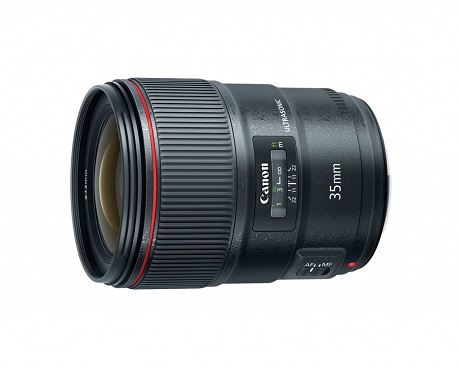
Canon EF 35mm f1.4 II L USM
This lens has got two aspherical elements and one Ultra Low Dispersion (UD) element along with the Blue spectrum refractive element. The blue spectrum refractive optics will refract shorter wavelengths of the visible spectrum (blue light) in order to significantly reduce chromatic aberrations and color fringing.
This will help in controlling the chromatic aberrations as well as color fringing. As a result the sharpness and clarity improves.
Canon has also given a sub-wavelength coating to lower the incidence of ghosting and contain lens flare. This will also improve the contrast as well as colour accuracy.
A Subwavelength Coating has also been applied to reduce ghosting and lens flare for greater color accuracy and contrast. The Ultrasonic autofocus motor (USM) provides fast and near-silent AF operation. Full time manual focus override enables precise manual focus even when in AF mode.
The minimum focus distance is 11″ with a 0.21x maximum magnification benefits working with close-up subjects.
Most of the times we face problems of finger prints in the lens. Canon has given Fluorine coatings on the front and rear surfaces of the lens to help reduce fingerprints and smudging.
A nine-blade aperture provides smooth and pleasing bokeh. It takes 72mm filter at the front.
The lens weighs 760 gms.
Preorder: You can preorder this lens from B&H by clicking this link: http://www.bhphotovideo.com/c/produc…990/KBID/13252
Pricing and Availability
The new Canon EF 35mm f/1.4L II USM lens is compatible with 72mm filters and will be supplied with Lens Hood EW-77B and Lens Pouch LP1219. It is scheduled to be available in October 2015, for an estimated retail price of $1,799.00.
http://www.indiawilds.com/forums/showthread.php?16831-Canon-launches-EF-35mm-f1-4-L-II-USM-lens
Canon announces development of new optical element for extremely low chromatic aberration in lenses
Canon has announced that it has developed a new optical element called Blue Spectrum Refractive (BR) for use in camera lenses which can correct chromatic aberrations to an extremely high level so that the lenses sporting the BR element will have extremely low chromatic aberrations.
The new BR optical element developed by Canon significantly refracts blue light.
Natural light, or white light, comprises a spectrum of wavelengths, or colors, each of which realizes a unique refractive index when passing through a lens. As all colors do not converge on the same point, this disparity causes chromatic aberrations, or color fringing, to occur in an image. The blue light wavelength had earlier caused great problems in all the light wavelengths to converge to a specific focal point. When the BR optical element is positioned between a concave and a convex element will result in outstanding chromatic aberration characteristics.

Canon has said that it has developed optical element by reviewing organic optical materials, beginning with the design of molecular structures, to achieve optimal chromatic aberration correction for suppressing color fringing.
Canon has announced that the EF 35mm f1.4 L II USM lens is the first lens to have chromatic aberration.
Canon Develops 250 Mpx APS-H sized CMOS sensor
In a stunning development, Canon has announced that it has been able to develop a 250 Megapixel CMOS sensor. This sensor is APS-H sized (approx. 29.2 x 20.2 mm), a sensor size which was earlier employed in Canon’s 1-D series cameras upto EOS 1D Mark IV. It may be pertinent to mention that recently Canon has released the world’s highest resolution DSLR camera in production the EOS 5DS and EOS 5DSR sporting 50 MP. So this development announcement of 250MP sensor is 5 times higher than the current highest resolution DSLR in production.
Canon has said that when this 250MP sensor is installed in a camera, it was able to capture images enabling the distinguishing of lettering on the side of an airplane flying at a distance of approximately 18 km from the shooting location. Lest our readers think that Canon has launched a new lens that can shoot closeups from 18km away, we need to clarify that this image capture employed a combination of optical and digital zooming. To read the letters written on the side of an airplane body 1/40,000th-sized area of the captured image was magnified.
Video footage captured by the camera outfitted with the approximately 250-megapixel CMOS sensor achieved a level of resolution that was approximately 125 times that of Full HD (1,920 x 1,080 pixels) video and approximately 30 times that of 4K (3,840 x 2,160 pixels) video. The exceptionally high definition made possible by the sensor lets users crop and magnify video images without sacrificing image resolution and clarity. However, it can only record video at that resolution at 5 frames per second instead of the standard 24/25 fps.
With CMOS sensors, increases in pixel counts result in increased signal volume, which can cause such problems as signal delays and slight discrepancies in timing. The new Canon-developed CMOS sensor, however, despite its exceptionally high pixel count, achieves an ultra-high signal readout speed of 1.25 billion pixels per second, made possible through such advancements as circuit miniaturization and enhanced signal-processing technology. Accordingly, the sensor enables the capture of ultra-high-pixel-count video at a speed of five frames per second. Additionally, despite the exceptionally high pixel count, Canon applied its sensor technologies cultivated over many years to realize an architecture adapted for miniaturized pixels that delivers high-sensitivity, low-noise imaging performance.
Canon is considering the application of this technology in specialized surveillance and crime prevention tools, ultra-high-resolution measuring instruments and other industrial equipment, and the field of visual expression.
Sony Launches FS5 camcorder
Sony has launched PXW-FS5 XDCAM Super 35mm camera. Following are the salient features:
· Sensor: Super 35mm size with approximately 14 stops of latitude
· Sensor mount: E mount. I can take adapters for using PL, EF, Leica and Nikon lenses.
· Codec: XAVC-L (4K and HD) or AVCHD. The XAVC Long codec allows you to encode from HD to UHD using Intra-Frame or Long GoP compression with 10-bit 422 for HD and the choice of 10-bit 422 or 8-bit 420 for UHD.
· Media: Two SD cards for simultaneous or relay recording
· Output: HDMI and SDI. 10bit 422 UHD video can be recorded only through SDI to an external recorder
· Audio: one XLR connector in the body along with a headphone jack
· The FS5 camera comes with a removable top handle which has a XLR 3-pin audio input and can supply phantom power.
· LCD viewfinder can also be attached to the top handle.
· The camera comes with a grip called “SmartGrip” by Sony which has Start/Stop, zoom and assign controls. The SmartGrip can be angled as per convenience.
· Supports WiFi and NFC
· Electronic variable ND system.
The Sony FS5 is aimed at productions for documentaries, reality TV and corporate applications.

Sony Launches FS5 camcorder
Price: The Sony FS5 is priced at 5599 USD. To use Canon EF or EF-S lenses one needs to buy a metabons IV adapter at a further 399 usd. India pricing is awaited.
Availability: November 2015
Preorders: This camera can be preordered at B&H – http://www.bhphotovideo.com/c/buy/So…DFF/d10-v1-t12
Sony Launches A7s II
Sony has launched a Mark II version of its A7s camera. The Sony A7s II camera will have the following specs:
- Full frame 35mm sensor with 12.2 Megapixels
- High ISO upto 409600
- 5 axis in camera optical image stabilisation
- Internal 4K video recording with full pixel readout without pixel binning in full frame format in XAVC S codec
- 120fps at Full HD at 100Mbps
- colour profiles: S-Gamut3.Cine/ S-Log 3, New Gamma Assist display, enhanced zebra function etc.
- Sony claims that this camera will have better auto focusing with 169 points in still photo shooting and can detect contrast in low light (as low as EV -4). In video mode autofocusing is twice as fast as the A7s
- 14 stops dynamic range in S-log 3 profile.
- SDXC memory card higher than Class 10 is required for movie recording in XAVC S format
- UHS Class 3 memory card is required for recording at 100Mbps
- Shutter life: 500,000-cycle durability
- Price: The Sony A7sII is priced at 2998 usd

Sony A7s II
Availability: According to B&H the camera will be available on October 16th if preordered now http://www.bhphotovideo.com/c/buy/Sony_alpha_A7S_II/Ntt/Sony%2Balpha%2BA7S%2BII/N/0/kw/search/BI/19990/KBID/13252/DFF/d10-v1-t12
Shure MOTIV M88 digital Stereo condenser mic for iOS
iphones and ipads are increasingly being used to capture videos by a lot of people. They often grumble about the poor quality sound. So Shure has launched MOTIV MV88 a stereo condenser microphone that directly fits in to any iOS device equipped with a Lightning connector.

Shure MOTIV M88 stereo mic for iOS
The MOTIV MV88 is a professional quality microphone and you can use it to record at 24bit, 48 kHz. It has a frequency response which is similar to the human hearing range ie from 20Hz to 20kHz.
The microphone element has a 90° hinge with left/right rotation for flexible audio and video recording options.
Shure has made the ShurePlus MOTIV mobile recording app available free of cost from the app store so that one can use it to mute, increase or decrease volume, set stereo width setttings, EQ as well as select one fo the five DSP modes. These five DSP modes have a different combination of EQ and compression including choices like loud, flat, speech, singing as a preset.
The microphone weighs 42gms and has an all metal construction. The box contains a iOS lightning cable.
The price of this microphone is $149 us dollars only.
B&H has this new microphone in stock now: http://www.bhphotovideo.com/c/produc…990/KBID/13252
Natural History
COUNTRY NOTEBOOK: M. Krishnan: ‘The Common Mynah’ By Saktipada Panigrahi
http://www.indiawilds.com/forums/showthread.php?8852-Country-notebook-m-krishnan&p=77062#post77062
Territorial display and fight of Pheasant-tailed Jacana in breeding season
Wildlife Photography
Jungle Cat in Sunderbans by Saktipada Panigrahi
Rhino by Samrat Sarkar
http://www.indiawilds.com/forums/showthread.php?16762-Here-He-comes-!!
Protection by Sabyasachi Patra
http://www.indiawilds.com/forums/showthread.php?16809-Protection
Tigress from Kolsa by Murugan Anantharaman
http://www.indiawilds.com/forums/showthread.php?16805-Beautiful-Tigress-from-Kolsa
Tigress sisters by Kaustav Chatterjee
http://www.indiawilds.com/forums/showthread.php?16764-3-Sisters
Red-billed Leiothrix by Abhirup Dutta Gupta
http://www.indiawilds.com/forums/showthread.php?16789-Red-billed-leiothrix
Painted Grouse Male by Shyamala Kumar
http://www.indiawilds.com/forums/showthread.php?16799-Painted-Grouse-Male
Goan Fejervarya (Fejervarya-gomantaki) by Abhishek Jamalabad
http://www.indiawilds.com/forums/showthread.php?16784-Goan-Fejervarya-(Fejervarya-gomantaki)
Lynx Spider by Prajwal Ullal
The Indian Ghost Tree by Paramvir Singh
http://www.indiawilds.com/forums/showthread.php?16796-The-Indian-Ghost-Tree
Dozing Tiger by Sabyasachi Patra
http://www.indiawilds.com/forums/showthread.php?16795-Dozing-tiger-in-Black-and-white
I look forward to your inputs and support in preserving the last tracts of wilderness and wildlife left in our beautiful country. For other interesting articles and images check –http://www.indi
To post in the IndiaWilds forums, you can register free of cost using your Full Name as user id at
http://www.indiawilds.com/forums/register.php
If you are already a member of IndiaWilds and have forgotten your user id and/or password you can mail to
administrator@indiawilds.com
If you want to contribute original articles, or for any image enquiries please send a mail to
administrator@indiawilds.com
Regards,
Sabyasachi Patra
Profile | Contact Us | Facebook | Diary | Equipment reviews | Forums | IndiaWilds You Tube Channel
Please post your views and feedback in the comments below.
- GoPro Hero 12 Black - 6 September,2023
- Leopards: The Last Stand - 2 July,2023
- Drifting in the Waters of Sundarbans - 26 March,2023

